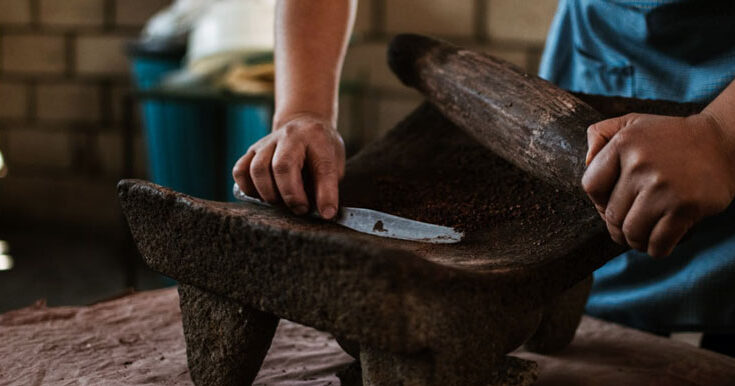Cultural heritage shapes every aspect of our lives, and the kitchen is no exception. From ancient cooking techniques to traditional utensils passed down through generations, our culinary tools tell stories of innovation, adaptation, and identity. It’s fascinating how these age-old influences continue to inspire the design and functionality of the gadgets we use today.
Take the mortar and pestle, for example—a tool with roots in civilizations like Ancient Egypt and India. Its enduring presence in modern kitchens highlights how cultural traditions remain relevant in contemporary cooking. As we explore the connection between heritage and modern tools, we uncover how history and culture have left their mark on everything from cast iron pans to precision knives. Understanding these connections enriches our appreciation for the tools we often take for granted.
Understanding Cultural Heritage in Culinary Tools
Cultural heritage shapes the design and functionality of culinary tools. These tools reflect the resources, cooking techniques, and traditions of specific regions. For instance, the Japanese cooking knives set embodies Japan’s emphasis on precision and artistry. Rooted in samurai sword-making techniques, these knives showcase exceptional craftsmanship that prioritizes fine slicing and attention to detail.
Materials and construction methods often align with local environments. Cast iron, widely used in Western cookware, originated due to the abundance of iron ore and the need for heat-retentive tools in colder climates. Similarly, bamboo steamers, integral to East Asian cooking, leverage the region’s bamboo availability and steaming-centric culinary practices.
Traditional tools retain cultural significance while adapting to modern kitchens. The mortar and pestle, used across diverse cultures, maintains its relevance for grinding spices, making pastes, and preserving flavors better than mechanical alternatives. These tools not only serve practical purposes but also connect us to ancestral cooking methods.
Exploring culinary tools reveals the diversity of global traditions. Precision-based tools exemplify innovation influenced by cultural priorities. On the other hand, communal cooking tools like large tandoors from South Asia highlight the emphasis on sharing food within communities. Modern adaptations often incorporate cultural elements into contemporary designs, blending heritage with advanced technology.
Interestingly, this blend of tradition and innovation is also seen in celebratory practices around the world. Just as traditional cookware evolves to fit modern kitchens, fireworks have transformed from simple gunpowder bursts to sophisticated, choreographed displays. Whether in cooking or celebration, cultural elements continue to shape advancements while honoring their origins.
Historical Evolution of Culinary Tools
Culinary tools have evolved through centuries, shaped by the influence of local materials, practical needs, and cultural values. These tools not only reflect technological advancements but also reveal the traditions and cuisines they support.
Traditional Materials and Techniques
Early culinary tools were crafted from natural materials like stone, wood, and clay, which were readily available and easy to work with. Mortar and pestle sets, for instance, were initially carved from stone to grind grains and spices, a practice tracing back to ancient civilizations in Africa and Asia. Similarly, clay and ceramic were widely used for making cooking vessels in regions where fireproof materials were needed. Metalworking later brought tools like bronze vessels and iron knives, marking a shift toward durability and expanded utility.
Traditional techniques also influenced the form and function of tools. Japanese cooking knives set an example, rooted in samurai sword-making, where expert forging and sharpening methods enhanced precision. These tools demonstrate how historical artisanship continues to define modern culinary practices.
Influence of Regional Cuisine
Culinary tools closely mirror the needs of regional cuisines, adapting to specific ingredients, tastes, and preparation styles. For example, in Western regions, abundant iron ore led to the development of cast iron cookware, which excelled in heat retention for hearty dishes.
Additionally, tools for communal meals, such as large woks for stir-frying in China or tagines for slow cooking in North Africa, highlight the social aspects of shared dining. These regional influences underline how local cuisines and cooking methods have left an indelible mark on tool design and practicality.
Modern Culinary Tools and Their Roots

Modern culinary tools, while innovative, often trace their roots back to traditional practices and materials. By exploring these connections, we uncover how cultural heritage continues to shape the tools we use today.
Innovations Inspired by Tradition
Many modern tools are inspired by age-old designs, refined through technological advancements. For example, Japanese cooking knives, originally developed from samurai sword-making techniques, have evolved into high-precision tools. Similarly, non-stick pans, a modern convenience, are rooted in the versatility of traditional cast iron cookware, which was prized for even heat distribution. Blenders and food processors reimagine the manual grinding process traditionally performed by the mortar and pestle, maintaining the foundational purpose while integrating speed and efficiency.
Traditional implements often inspire both aesthetics and functionality in contemporary designs. Handles, blade shapes, and materials honor heritage while meeting modern cooking demands.
Globalization and Hybridization of Tools
Culinary tools have adapted through globalization, blending features from different cultures. The wok, once exclusive to East Asian kitchens, is now standard in diverse cuisines, favored for its versatility. Similarly, mezzalunas—originating from Italy—are now used globally for chopping herbs, highlighting cross-cultural utility.
Hybrid tools also reflect this exchange. Modern tagines may feature tempered glass tops, combining traditional cooking methods with contemporary materials. Innovations like electric rice cookers incorporate functions inspired by clay pot rice cooking. These blended tools reveal how cultural exchange enriches our kitchens while preserving the essence of culinary heritage.
Cultural Symbolism in Contemporary Kitchenware
Cultural heritage plays a subtle yet significant role in the design and purpose of modern kitchen tools. Many contemporary culinary tools reflect cultural symbolism, blending traditional elements with functional utility.
Preserving Traditions Through Design
Design choices in kitchenware often connect us to cultural roots. For instance, Japanese cooking knives, known for their refined craftsmanship, maintain their link to historical samurai sword-making through their distinct aesthetics and unparalleled precision. These knives not only symbolize Japan’s legacy of artistry but also showcase practical efficiency in modern kitchens.
Additionally, regional motifs, materials, and form preserve traditions. Moroccan tagines retain their iconic conical design, rooted in slow-cooking methods essential to North African cuisine. Similarly, cast iron cookware represents the Western heritage of sturdy, enduring tools used over open flames. These designs, while adapted for modern use, remind us of their culturally significant origins.
Culinary Tools as Storytellers
Culinary tools often narrate the history and values of their cultures. The cooking knives set embodies a story of discipline and meticulousness, passed down through generations of artisans. Each blade carries cultural identity while meeting present-day culinary demands.
Similarly, woks, with their diverse applications, tell stories of communal dining in East Asia, where food preparation and sharing strengthen social bonds. Mortars and pestles, used universally, signify ancient practices and the importance of manual techniques. By integrating symbolism into functionality, these tools communicate the essence of their heritage, even as we use them in modern times.
Challenges and Opportunities in Merging Tradition with Modernity
Blending cultural heritage with modern culinary tools creates unique challenges and opportunities. Striking this balance requires preserving traditional values while adapting to contemporary needs.
Balancing Functionality and Heritage
Functional demands often conflict with maintaining traditional elements in culinary tools. For instance, cooking knives rely on centuries-old forging techniques, yet modern production must meet mass-market efficiency. Craftsmanship risks dilution when scaling iconic methods for global markets. However, maintaining heritage can elevate a tool’s appeal and authenticity.
Innovations in ergonomics, materials, and efficiency also enhance traditional tools without discarding cultural elements. Tools like the mortar and pestle now incorporate composite materials for extended durability while maintaining their historical essence. This approach ensures cultural significance isn’t compromised while adapting utensils to evolving culinary practices.
Future Trends in Culinary Tool Design
Future trends lean heavily toward integrating smart technology with cultural traditions. Culinary tools shaped by heritage, like tagines and cooking knives, are being modernized with heat-resistant materials and precision engineering. For example, advanced alloys enhance durability in knife blades while aligning with historical forging techniques. Smart features, such as temperature sensors in cookware, offer precise control without displacing their traditional essence.
Sustainability is another driver in tool design, with manufacturers exploring durable, eco-friendly materials. Bamboo handles and recycled metals support green practices, ensuring cultural tools remain relevant amidst environmental concerns. Additionally, global collaborations have introduced hybrid designs, merging diverse cultural elements, such as knives crafted with ergonomic Western-inspired handles, setting a benchmark for future practicality and inclusivity. For a deeper dive into the evolution of culinary tools, check out this Smithsonian article on culinary history.








